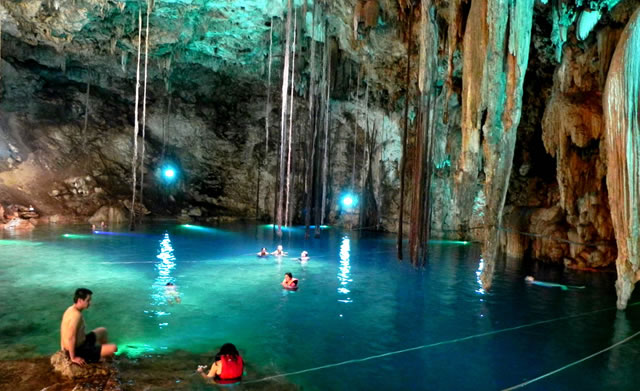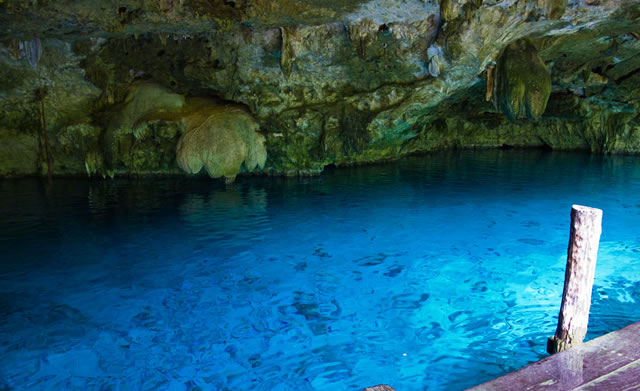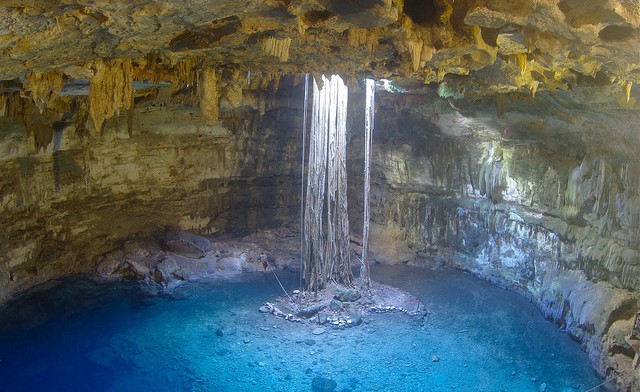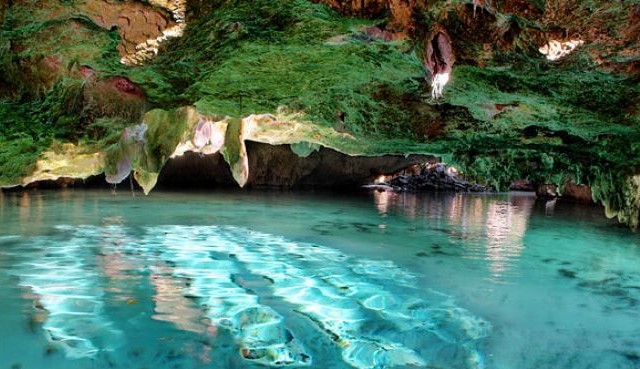Mexico’s Yucatan peninsula is famous for its stunning turquoise waters, white sand beaches, lush jungles and ancient ruins of the Maya who once lived there. But, the Yucatan is also home to one of the world’s most beautiful and lesser known natural wonders, the cenote.
 image: Boris G. Creative Commons – Flickr
image: Boris G. Creative Commons – Flickr
Providing the Mayans with a year round water source, cenotes were believed to be entrances to the underworld and were the centers of many their rituals.
 image: Razi Marysol Machay, Creative Commons – Flickr
image: Razi Marysol Machay, Creative Commons – Flickr
Today, visitors to these magical pools of water able to dive, snorkel, swim or simply admire their otherworldly beauty.
 image: Alex Berger, Creative Commons- Flickr
image: Alex Berger, Creative Commons- Flickr
The Yucatan Peninsula is home to an estimated 7000 cenotes, half of which have never been explored.
Irene Middleman Thomas at TravelAge West gives us a list of her tips and picks for Top Cenote Sites to visit:
En Route
The Route of the Cenotes runs east to west from Merida to Puerto Morelos, just south of Cancun. The cenotes are promoted as an ecotourism attraction, and many tour operators in the region offer cenote tours. Visitors can snorkel, dive, swim or wade through them. Some cenotes contain fossils of prehistoric animals in their walls, while others are home to many species of tiny fish that will delight snorkelers and swimmers. Most cenotes are found inside Maya jungle areas, with enormous trees and other lush vegetation that is home to tropical birds. Some are privately owned, while others are run by local Maya communities that may charge a small admission fee, although the tour operator may include that in the package. It is advised to travel with a tour operator, such as AllTournative, since many cenotes are difficult to locate, are on private land or are only accessible by all-terrain vehicles.
Run by local Maya women, Yokdzonot Cenote and Ecological Garden is a relaxing getaway. It offers azure water, clean facilities and a charming restaurant with shady palapas on site, as well as an eco-friendly water waste system.
Cuzama consists of three spectacular cenotes located near the village, and they can be reached by hiring a local guide. The guide carries equipment to the site via a horse-drawn cart running over an abandoned narrow-gauge railroad.
Another option is Bolonchoojol, a deep hole that is accessible by a ladder made of welded old railroad ties. The ladder leads to a well-lit cavern with crystalline water and huge stalactites and stalagmites.
Eco-Arquological Park Ik-kil is home to the 85-foot deep Sagrado Cenote Azul (Sacred Blue Cenote). It is about 20 minutes from Chichen Itza, and only 30 minutes from Merida. Surrounded by exotic plants and trees, it is also the habitat for hundreds of wild birds and is ideal for swimmers.

Better Living uses affiliate links. If you make a purchase through them, we may receive a small commission (for which we are deeply grateful) at no cost to you.




